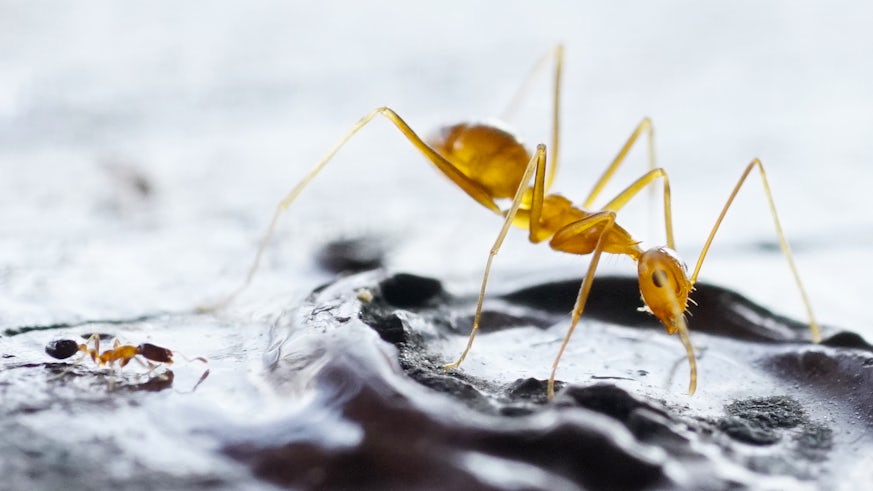Ant invasions cause species loss
21 August 2023

New research by Cardiff University has measured the impact of ant invasions on native species at a global scale for the first time - finding that the introduction of invasive ants into new environments can reduce species numbers by 53% through competition and predation.
Ants play an important role in helping to maintain stable ecosystems, despite this some species of ants have been transported by humans globally and can cause major problems, even contributing to the extinction of some animal species.
The introduction of invasive ant species into habitats around the world through human activities, such as international commerce, has led to non-native ants establishing colonies in various habitats worldwide. Most research studying these populations show that invasive ants can lower native species diversity, probably through predation and competition.
Invasive ants possess adaptations that allow them to dominate most native ant species. This includes being able to eat a wide and general diet, as well as forming supercolonies –interconnected nests consisting of multiple queens and that can spread over large areas.
Dr Maximillian Tercel, Cardiff University’s School of Biosciences, said: “Ants are ecologically important social insects, helping to maintain key ecosystem functions. They participate in a wide range of species interactions, such as acting as predators, parasites, herbivores, granivores, prey, mutualists and hosts, across almost all terrestrial environments and all continents except Antarctica.
“But this means, through human transportation around the world, we have introduced different non-native species of ants into new areas – this can cause a lot of problems for the ecosystems and biodiversity in that area. Invasive ants are generally expected to lower native species diversity by predation and competition.
“However, case studies show that the effect of invasive ants might vary depending on where they invade and between different groups of animals. For example, birds might react badly to invasive ants but mammals or some insect groups may not react as badly – but this hasn’t been measured until now. Ant invasions appear to be a really important element to consider when trying to conserve native biodiversity in many areas around the world, so we aimed to estimate the effect of invasive ants on animal community biodiversity for the first time.”

The researchers extracted data from 46 published articles investigating the responses of animals to ant invasion in areas relatively unimpacted by other stressors, such as human disturbance. They focused on the impacts on the abundance and richness of species in those locations after ant invasions.
The Cardiff scientists calculated that an ant invasion reduces the total number of animal individuals in that location by 42% and reduces the number of species by 53% on average.
“This is a huge reduction in the diversity of animal communities and suggests that invasive ants can pose serious problems for the health of ecosystems in which they invade.
“These findings show that we urgently need to improve international prevention processes, early detection systems, and well-designed control strategies for invasive ants,” added Dr Tercel.
The research, Non-native ants drive dramatic declines in animal community diversity: A meta-analysis, was published in Insect Conservation and Diversity.
